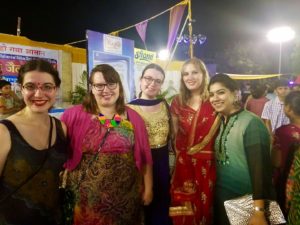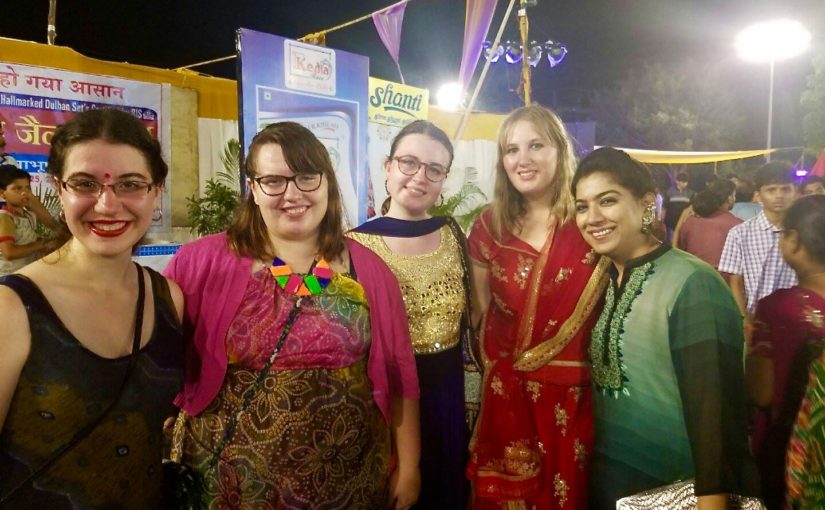Festivals frequently break up the fall semester in India. Taking part in these festivals has been a great way to enjoy time away from my studies, and immerse myself in the culture.
In the case of the most recent festival I attended, it can be quite a workout too.

Navaratri is a festival celebrating Maa Durga, or Mother Goddess, who appears in nine different forms called avatars. For nine nights the faithful worship a different avatar of Mother Goddess through offerings, prayer ceremonies and, most importantly, dancing.
The forms of dance that are performed nightly through all nine days of the festival are called Dandiya and Garba.
Both dances originated in the state of Gujarat on the western coast of India and many different variations exist. One can even create their own steps to the beat. Traditionally, these dances are performed with a set of decorative sticks about the size of drumsticks that are struck together. Many people simply clap in lieu of using these sticks, however.
In cities, these massive all-night dance celebrations have live music, contests, food stands and more, all accessible to anyone wishing to participate for a small entry fee.
On the fifth night of Navaratri, my program took four students (including me) from the American Institute for Foreign Study to one of the dancing venues outside of Hyderabad.
As soon as we entered, we were confronted with a sea of merrily dancing people, many with their brightly colored dress covered in sparkling mirror work. We briefly surveyed the dancing crowd before jumping in with a group whose dance moves we felt we could copy with relative ease.
It was admittedly awkward at first as we floundered to learn the steps, but after we caught on we cheerfully followed those ahead of us as they circled through the crowd.
My favorite set of moves weirdly enough resembled the Cotton-Eyed Joe line dance, something I would not have expected to encounter as a traditional Indian dance step.
Everyone was in full enjoyment of the evening, singing along to the popular Bollywood songs the band played and frequently switching between groups of dancers. All ages were dancing; from the smallest child to the oldest adult, everyone was participating in one way or another.
Dance requires no translation or common language because the movements themselves are charged with emotion, making it an ideal outlet for breaking down barriers to interaction abroad.
I encourage anyone abroad to join in with the local celebrations. It is a great way to connect and get a feel for what your host country is really like. Don’t worry if you are less than perfect in your attempts, those experiences may prove to be some of your most memorable.
